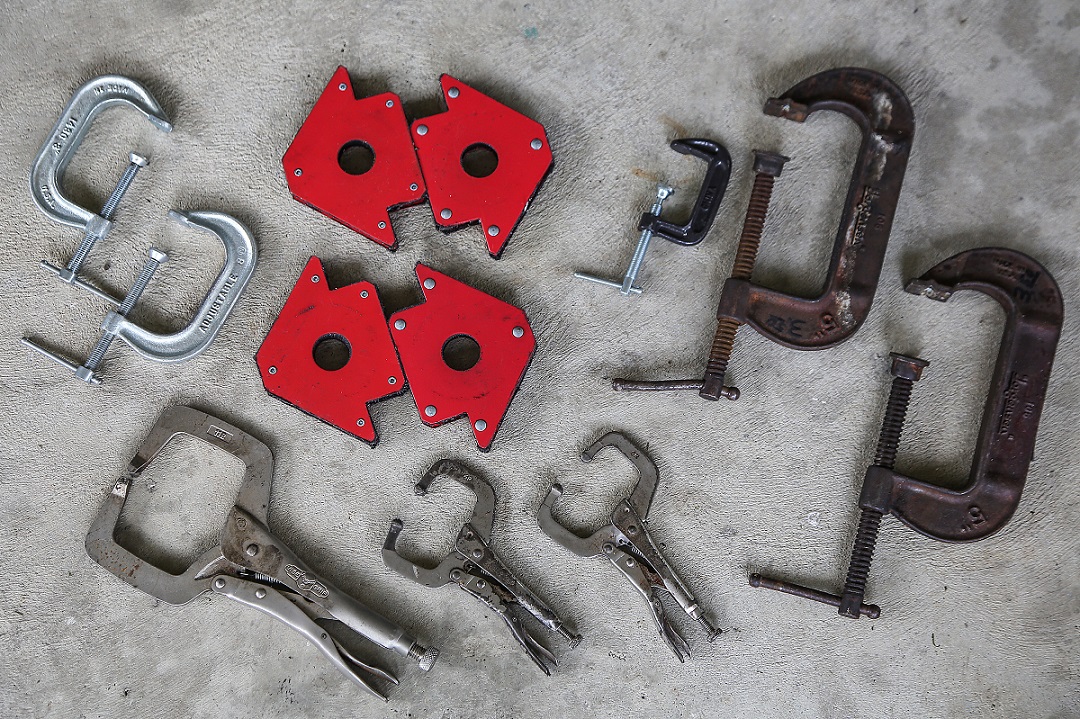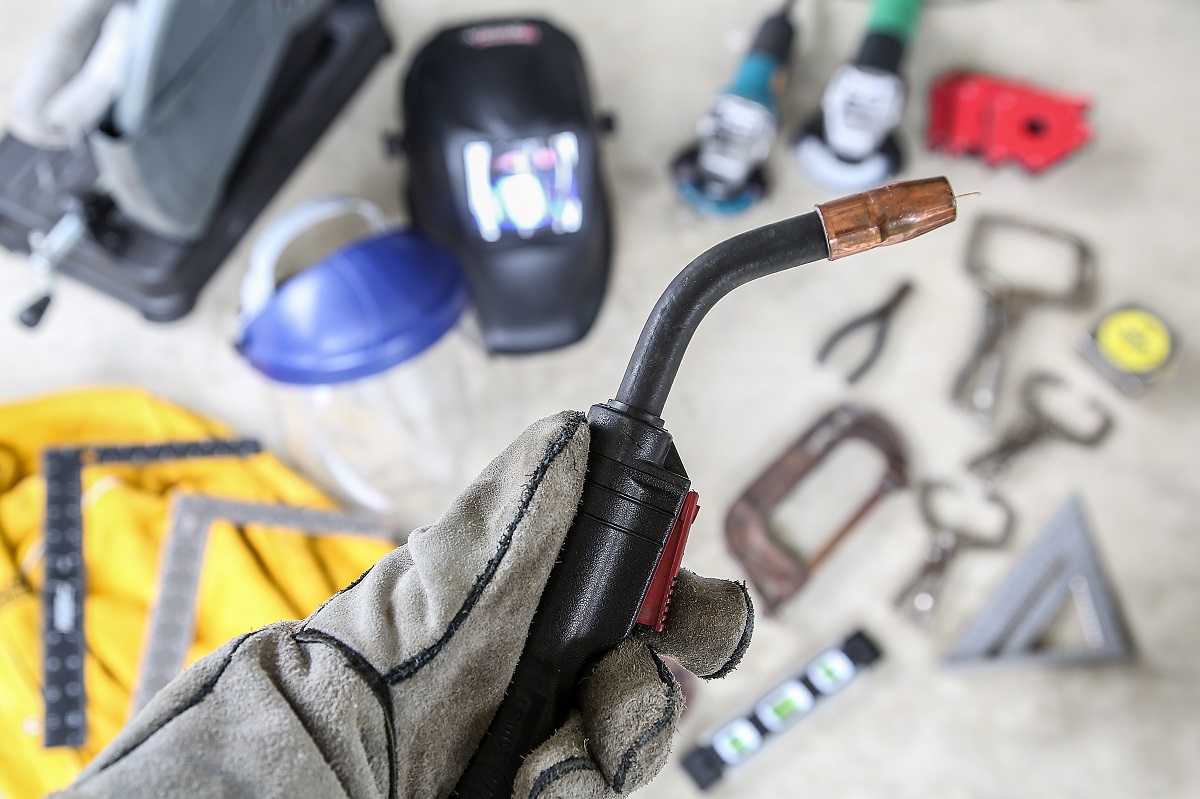Media | Articles
15 must-have MIG welding tools and accessories
A MIG welder is a very versatile tool for the car lover. They can be used to replace rusty sheet metal, fabricate brackets, remove stuck fasteners, and the more powerful versions can even tackle frame repair. When first starting MIG welding there are absolute necessities and there are tools that make the job much more comfortable and speed up things up. Here are our favorite must-have tools and accessories that we can’t live without:
- An auto-darkening welding helmet saves time and helps start the weld on target without any guessing. It’s an absolute must-have and they’re quite affordable.
- Gloves. Welding involves intense heat. It’s melting steel after all. TIG gloves are thinner and allow for more dexterity, but offer less insulation. MIG gloves are thicker and make it difficult if not impossible to pick up small or thin objects, but allow for a second hand to offer precise positioning and stability of the MIG torch even when it’s right up next to a fresh weld.
- Proper clothing. Whether it’s made of leather or a non-synthetic flame-resistant material, a jacket will keep your arms and upper body safe from burns, and a hat or other head covering will stop an errant spark from landing on your scalp or neck. A bandana or backwards cotton baseball cap is all it takes.
- Fire extinguisher. Make sure a recently inspected fire extinguisher is in reach and that it is approved for the types of fires that may occur. An A-B-C-rated extinguisher should cover any that may arise when MIG-welding steel.
- Hearing and face protection. Safety glasses, a face shield, and ear muffs/plugs are necessities. The welding process is only about as loud as frying breakfast, but the cutting and grinding used to prepare materials is intense. A set of ear plugs or muffs will preserve your hearing, while safety glasses and a face shield protect from flying debris when grinding, especially if a grinding disc brakes.
- Angle Grinders. These have many uses, and it’s helpful to have at least two—one with a cutting wheel that has a thin kerf, and one with a grinding or sanding disc to remove scale, prep surfaces, chamfer corners, and smooth welds. Having two will save time spent looking for the spanner and changing discs for every other task. Extra tip to reduce noise: sanding discs wear faster but are much quieter than grinding discs and don’t annoy the neighbors as much.
- Chop saw. All of those angles and tubes aren’t going to cut themselves. An abrasive chop saw is affordable, and with some patient clamping can get repeatable 45-degree miters.
- Squares. Carpenter squares are great for checking joints and miters and marking pieces to be cut, while beefier fabrication versions allow clamping directly to the work to maintain square joints while welding.
- Level. Along with a square, a level helps keep projects true.
- Tape measure. Accuracy counts, and the squarest of corners won’t line up if the pieces aren’t cut correctly. Retractable versions are great for long pieces, while flat steel rulers can help for smaller, more intricate parts.
- Soapstone. Cheap and easy to use, soapstone makes marks on steel that are easy to see even when the metal gets hot.
- Pliers. While there are specialty MIG welding pliers, we’ve found that a set of needle-nose or diagonal cutters will work just fine. You’ll frequently use them for snipping off the wire and clearing it when it gets stuck to the contact tip. Extra tip: grind the diagonal cutters a bit on the bottom until the cutting edge is flush. It will help get the wire unstuck when it melts back almost all the way to the contact.
- Clamps. Everybody needs clamps, lots of them. C-clamps, Vise-Grips, pipe clamps—you may have enough for the job, but you can never have too many.
- Magnets. Not as secure as clamps, although very helpful nonetheless, the standard arrow-shaped magnets are good for 45-, 90-, and 135-degree angles. They’re also available in adjustable versions that pivot to hold at any angle.
- Nozzle dip. Weld more and curse less with frequent application of nozzle dip to keep spatter from sticking to the torch tip. Any slag buildup can prevent shielding gas from flowing and wire unspooling. It’s inexpensive and lasts a long time.


Armed with these tools and tips, you’re ready to sit down and throw some sparks. Good luck!
Marketplace
Buy and sell classics with confidence





Thanks for mentioning that everyone needs clamps when welding. I would like to get some new welding supplies this week since mine are pretty old. I’ll make sure to get some new clamps online as well. https://www.gemstatewelderssupply.com/Products/